To identify Tencel in fabrics, check the labels for "TENCEL™" or "Lyocell." These terms signify that the fabric is made by Lenzing AG. You'll notice Tencel's distinctive silky feel and smooth texture, setting it apart from other materials. It often has a subtle sheen and drapes elegantly. Additionally, its superior moisture-wicking abilities make it more breathable than many synthetics. Tencel is also biodegradable, making it a sustainable choice. If you're curious about its care and other features, you might find some surprising details that enhance your understanding of this versatile fabric.
Understanding Tencel and Lyocell
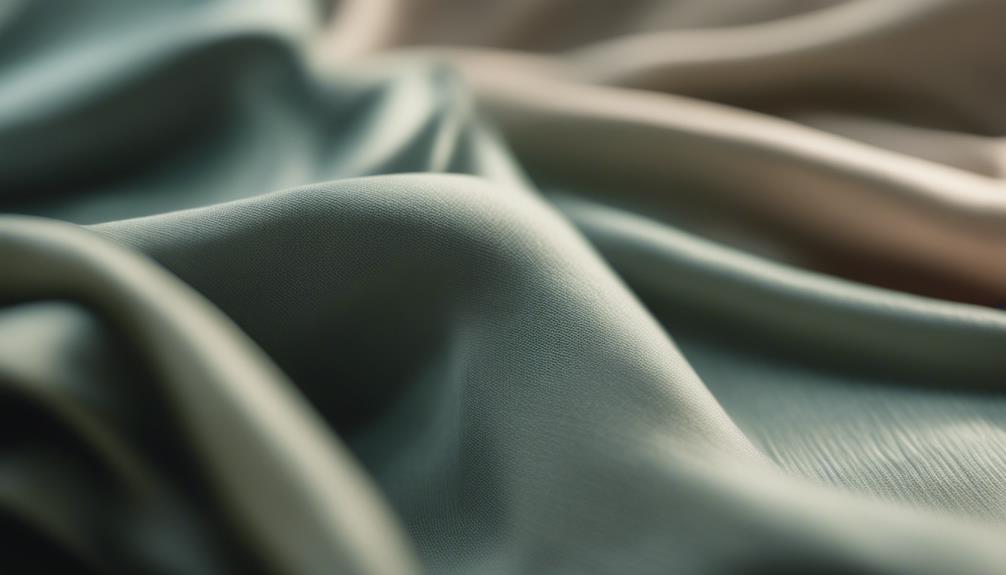
When it comes to sustainable fabrics, TENCEL™ stands out as a leading choice due to its eco-friendly production and luxurious feel. TENCEL™ is a brand name owned by Lenzing AG, specifically for their Lyocell fibers made from natural cellulose materials sourced from sustainably managed forests. This focus on sustainability is fundamental for anyone passionate about sustainable fashion.
The production process for TENCEL™ Lyocell is a closed-loop system, meaning that solvents used in manufacturing are recycled, generating minimal waste compared to conventional fibers like viscose. This commitment to eco-friendliness sets TENCEL™ apart in the textile industry.
You'll appreciate the softness, breathability, and moisture-wicking abilities of TENCEL™ fibers, which make them comparable to silk or cotton in comfort. To carry the TENCEL™ trademark, a product must contain at least 30% TENCEL™ Lyocell fibers, ensuring a certain level of sustainability. It's important to note that while all TENCEL™ fibers are Lyocell, not all Lyocell is TENCEL™; the latter adheres to strict environmental and quality standards set by Lenzing. This distinction is critical for conscious consumers like you.
Key Characteristics of Tencel
TENCEL™ fibers stand out due to their unique characteristics that enhance both comfort and sustainability. When you touch TENCEL™ fabrics, you'll notice their incredible softness and smoothness, often likened to silk. This luxury feel is coupled with durability, making these fibers resistant to wrinkles and fading over time.
One of the key features of TENCEL™ lyocell fibers is their excellent moisture-wicking properties. They can absorb up to 50% more moisture than cotton, keeping your skin dry and minimizing bacterial growth. Plus, TENCEL™ is biodegradable, contributing to sustainable sourcing without compromising quality.
The production of TENCEL™ fibers utilizes a closed-loop process, which recycles 99% of the solvents and water used, considerably reducing the environmental impact. When shopping, look for the TENCEL™ label or certification, indicating that at least 30% of the fiber content is TENCEL™. This not only guarantees a level of sustainability but also supports traceability in the fashion industry.
Sustainability and Certifications
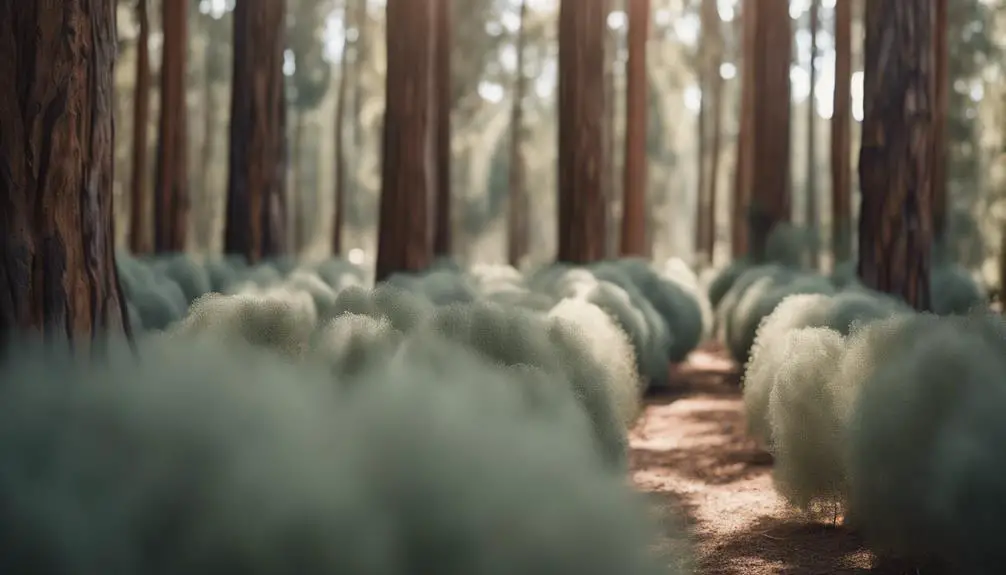
Sustainably sourced and certified, TENCEL™ fibers consistently stand out in the textile industry for their eco-friendly credentials. When you choose TENCEL™, you're not just opting for a luxurious fabric; you're supporting a sustainable future. TENCEL™ fibers are made from wood pulp sourced from responsibly managed forests, certified by organizations like the Forest Stewardship Council (FSC). The production employs a closed-loop system that recycles 99% of solvents and process water, greatly reducing the environmental impact associated with conventional fibers.
Here are some key sustainability highlights of TENCEL™:
- Certified Sustainable: At least 30% TENCEL™ Lyocell is required to carry the trademark.
- Eco-Friendly Production: The closed-loop system minimizes waste and resource depletion.
- Recognized Leadership: TENCEL™ holds EcoVadis Platinum Status for its commitment to sustainability.
- Safe for You: OEKO-TEX certified, ensuring TENCEL™ fibers are free from harmful substances.
Identifying Tencel in Fabrics
Identifying Tencel in fabrics can be straightforward if you know what to look for. First, check the label for "TENCEL™" or "Lyocell," as this indicates the fibers are produced by Lenzing AG. TENCEL™ Lyocell fibers have a distinct silky feel and smooth texture that set them apart from other materials. They are often compared to natural fibers like silk and cotton due to their breathability.
Another telltale sign is the fabric's elegant appearance, characterized by a slight sheen and a graceful drape, making garments flow beautifully. Unlike stiffer synthetic fibers, TENCEL™ offers a more luxurious look and feel.
You'll also appreciate TENCEL's moisture-wicking properties, which help keep your skin dry, outperforming many synthetic alternatives. Additionally, TENCEL is biodegradable, aligning with eco-friendly principles. While you won't be discussing specific fabric care techniques just yet, remember that gentle washing and air drying are essential to maintain the quality of TENCEL fabrics. By keeping these features in mind, you'll easily identify TENCEL in your wardrobe.
Care and Maintenance Tips
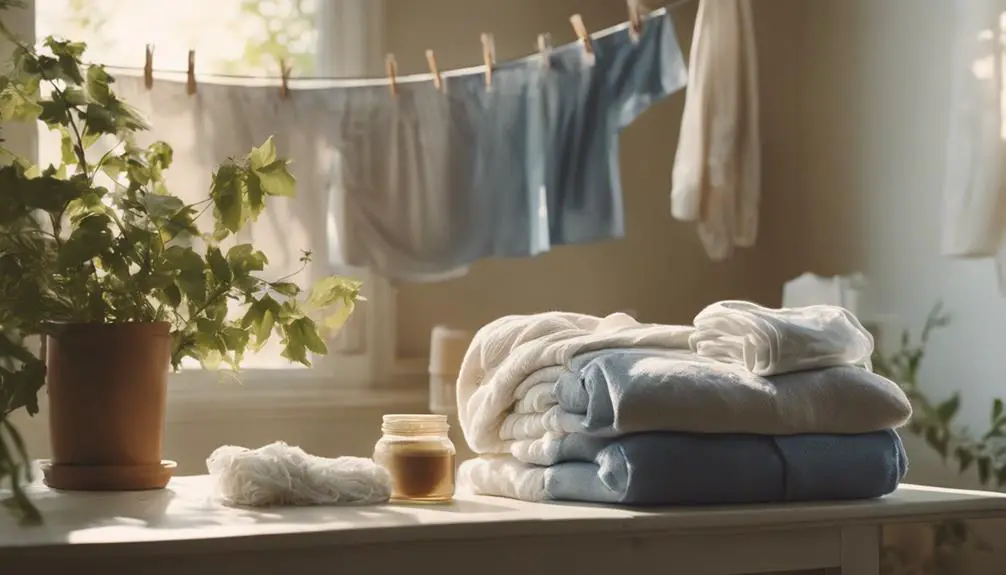
When it comes to caring for Tencel fabrics, following the right maintenance tips can help guarantee their longevity and maintain their luxurious feel. Tencel is delicate yet durable, and with proper care, it can stay looking and feeling great for years. Here are some essential tips for Tencel maintenance:
- Machine wash on a gentle cycle with cold water to keep the fibers intact.
- Air dry your Tencel items to avoid shrinkage and preserve their shape; skip the dryer altogether.
- Treat stains promptly using mild detergents to prevent damage to the fabric.
- Iron on low heat if necessary, helping to remove wrinkles without harming the fibers.
Always remember to avoid harsh chemicals and bleach when caring for Tencel, as these can compromise its eco-friendly properties and durability. By following these care and maintenance tips, you'll ascertain your Tencel fabrics remain soft, vibrant, and comfortable for everyday wear. Embrace the beauty of Tencel, and enjoy your eco-friendly choice in fabrics!
Frequently Asked Questions
How to Identify TENCEL Fabric?
When you touch the fabric, notice its silky feel and smooth texture. Check for labels mentioning "TENCEL" or "TENCEL Lyocell," and observe its breathable, moisture-wicking properties for a sustainable fabric choice that drapes beautifully.
What Does 100% TENCEL Feel Like?
When you touch 100% Tencel, you'll feel its exceptional softness and smoothness, almost like silk. It's cool against your skin, breathable, and hypoallergenic, making it incredibly comfortable for all-day wear, especially in warm weather.
What Is the Difference Between Lyocell and Tencel?
Tencel's a branded version of lyocell, produced by Lenzing AG. While all Tencel fibers are lyocell, not all lyocell fibers meet the quality and sustainability standards required to be labeled Tencel.
What Are the Disadvantages of Tencel?
Tencel has some disadvantages. It can pill easily, retain odors, and requires careful washing to avoid shrinkage. Additionally, mixed blends with synthetic fibers reduce its biodegradability, impacting the overall environmental benefits you might expect.
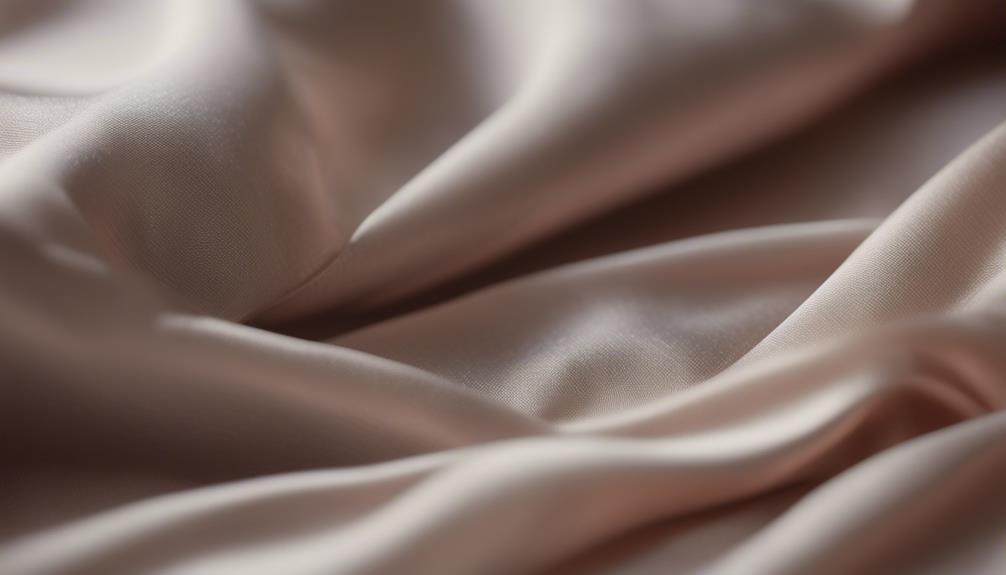


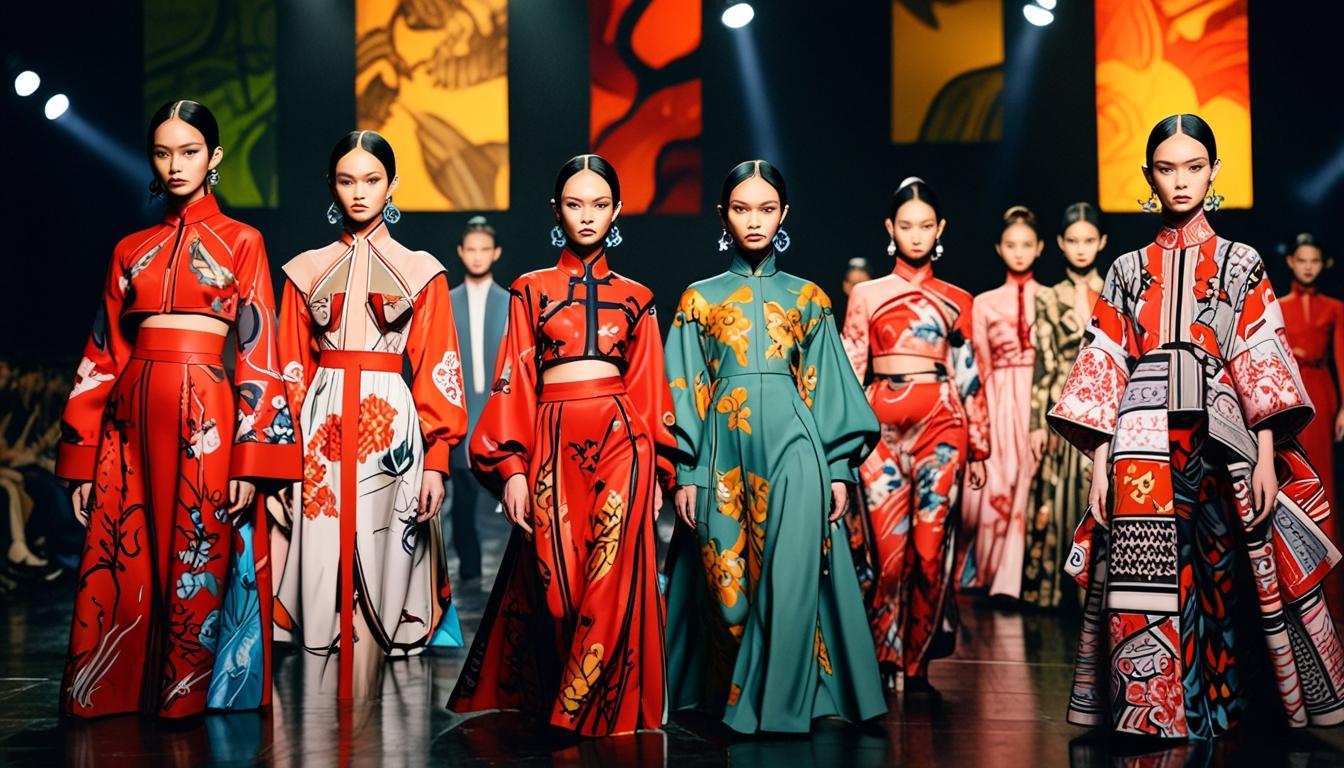

Thank you for your sharing. I am worried that I lack creative ideas. It is your article that makes me full of hope. Thank you. But, I have a question, can you help me?
Thanks for sharing. I read many of your blog posts, cool, your blog is very good.